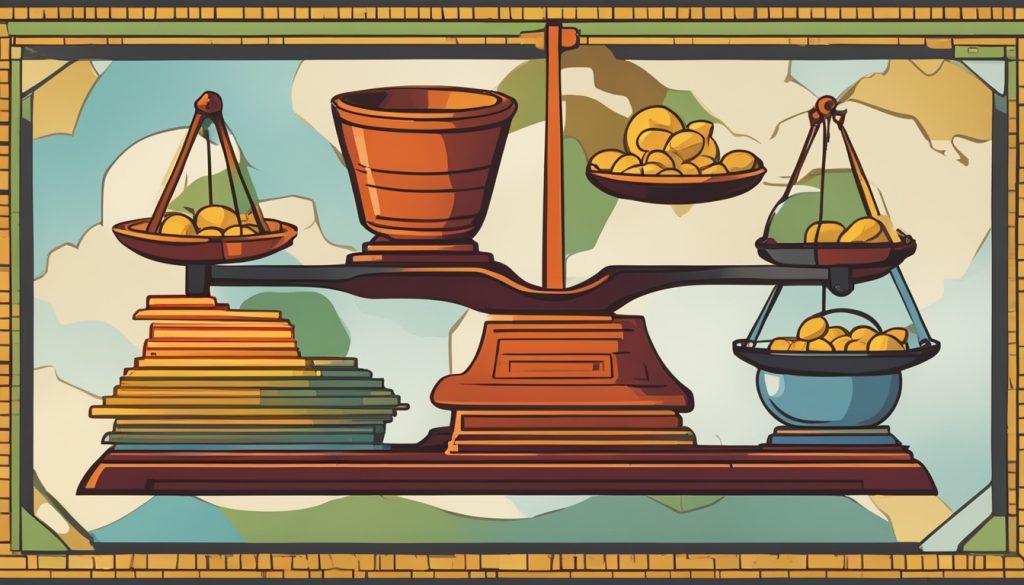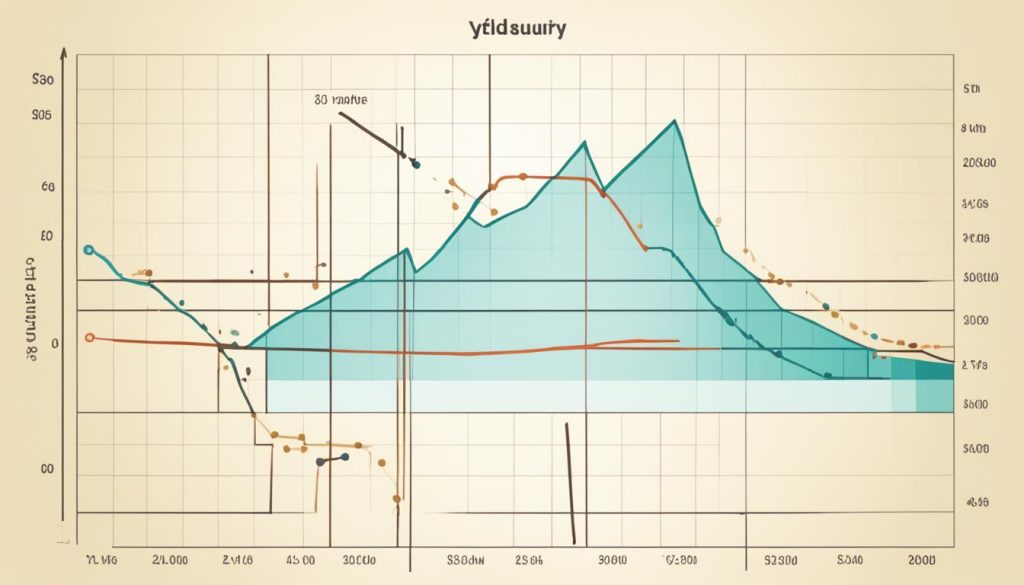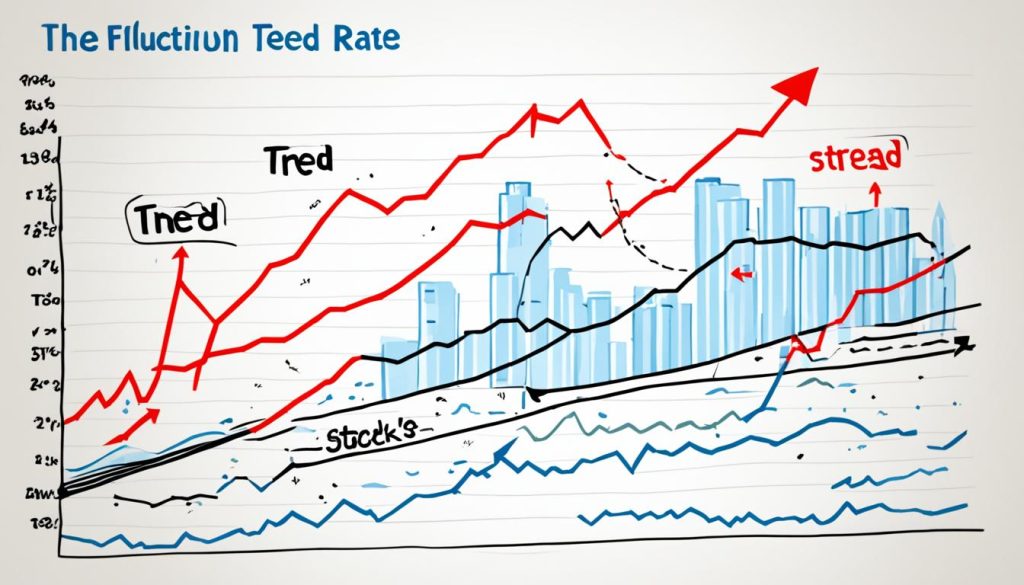For investors, knowing about the TED spread is key. It helps you make smart choices in the financial markets. The TED spread shows the difference between short-term U.S. government bond rates and the London Interbank Offered Rate (LIBOR)1. This spread tells a lot about the credit markets and the economy’s health.
Key Takeaways
- The TED spread is a crucial financial indicator that measures the difference between T-bill and LIBOR rates.
- It provides insights into the health of the credit markets and the overall economy.
- Understanding the TED spread is essential for making informed investment decisions.
- The TED spread can signal potential financial crises or economic shifts.
- Tracking and analyzing the TED spread can help investors anticipate market changes.
What is the TED Spread?
The TED spread shows the difference between the interest on three-month U.S. Treasury bills and the three-month London Interbank Offered Rate (LIBOR)2. It’s a key way to measure credit risk in the financial markets2.
Definition and Significance
The TED spread is found by subtracting the three-month T-bill yield from the three-month LIBOR rate2. LIBOR is the rate banks charge each other for loans. T-bills are seen as risk-free because they’re backed by the U.S. government2. A wider TED spread means LIBOR is going up faster than T-bill rates. This suggests banks are seeing more perceived risk and are less willing to lend to each other2.
The TED spread is usually in basis points (bps) and moves between 10 to 50 bps (0.10% to 0.50%) normally3. But during financial crises, it can go beyond this range3. A spread over 48 basis points signals an economic crisis3.
Relationship with LIBOR and T-Bill Rates
The TED spread shows the premium banks charge for lending to each other over lending to the U.S. government, seen as the safest borrower2. A bigger TED spread means banks see more perceived risk in the credit markets2. A smaller spread suggests a stable economy with less default risk2.
The Federal Reserve has said LIBOR contracts should stop by June 30, 2023, due to concerns over manipulation2. This change will likely affect the TED spread’s calculation and importance.
“The TED spread is a widely tracked indicator of credit risk in the global financial system.”
Interpreting Movements in the TED Spread
The TED spread is a key financial metric that shows the state of credit markets and economic conditions4. A positive and widening TED spread means credit risk is up and financial conditions are getting tighter4. It shows banks are seen as riskier than the U.S. government, and lenders want higher premiums to lend to them4. This could be a sign of possible financial stress or an economic slowdown.
Positive TED Spread Implications
A rising TED spread with a positive value means financial markets see higher credit risk4. This suggests wider economic uncertainty, as banks lend less and are more cautious4. Investors should watch the TED spread closely. A widening spread could mean asset prices might drop and market volatility could go up4.
Negative TED Spread Implications
A negative or narrowing TED spread means credit conditions are getting better and risk is seen as lower in the financial system5. This is good for the economy, as banks are seen as safer and can get funds cheaper than U.S. Treasuries5. A negative TED spread is often seen during economic growth and stability5.
Watching the TED spread closely helps investors and policymakers understand the financial markets and economy’s health45. Knowing what the TED spread means can help with investment decisions and policy actions during market stress.

The TED Spread and Financial Crises
The TED spread is a key indicator of financial crises. A sharp rise in the TED spread often precedes or coincides with major market turbulence, such as the 2008 global financial crisis.6 When financial stress hits, the TED spread gets wider. This happens because investors want higher returns to lend to banks. It shows growing worries about the risks and the health of the financial system6.
The 2007 to 2009 financial crisis had two main phases. The first phase, from August 2007 to August 2008, was due to subprime mortgage losses in the U.S. financial system7. By early 2008, losses on these mortgage-backed securities reached about $500 billion7. Yet, the U.S. economy kept growing into the second quarter of 2008, even with market troubles7.
Then, in mid-September 2008, the crisis worsened with Lehman Brothers’ bankruptcy and AIG’s collapse7. This led to runs on financial institutions, mainly in the shadow banking system, not traditional banks7. Haircuts, or the value of collateral, hit up to 50%, making borrowing harder and causing financial institutions to reduce their debts7.
Because of this, the CBO predicted the unemployment rate would jump from 5.4% in 2008 to 6.2% in 2009. They also forecasted a 0.9% real GDP growth in the fourth quarter of 2008, followed by 1.8% growth in 20097.
“The TED spread is often seen as the difference between U.S. Treasury bill rates and LIBOR6. Normally, it’s between 30 to 100 basis points. But it goes up when there’s uncertainty or a crisis6. A high TED spread means more risk is seen in the private sector. A low spread means less risk6.”
The TED spread soared in 2008, showing the market’s high risk perception6. Now, it’s reported to be low, indicating financial stability6.
Calculating and Tracking the TED Spread
Calculating the TED spread is easy. You just subtract the three-month T-bill yield from the three-month LIBOR rate8. This shows how much risk and liquidity concerns there are in the financial world8. Investors and analysts watch the TED spread to understand changes in credit and the economy.
Data Sources and Formulas
You can find the data to calculate the TED spread from many financial sources. The Federal Reserve gives the three-month T-bill yield, and the British Bankers’ Association provides the three-month LIBOR rate8. Just subtract the T-bill yield from the LIBOR rate to get the TED spread value8.
| Metric | Data Source |
|---|---|
| 3-month T-bill Yield | Federal Reserve |
| 3-month LIBOR Rate | British Bankers’ Association |
Watching the TED spread over time helps us understand the financial markets better.  It shows shifts in market feelings, credit, and how easy it is to trade9. This info helps investors and analysts make better choices and adjust their plans.
It shows shifts in market feelings, credit, and how easy it is to trade9. This info helps investors and analysts make better choices and adjust their plans.
“The TED spread is a widely-watched indicator of perceived credit risk in the global financial system. Its movements can signal changes in market confidence and liquidity conditions.”
In conclusion, the TED spread is a key tool for checking the financial markets’ health. By knowing how to calculate and track it, investors can get important insights. This helps them make smarter investment choices98.
The TED Spread’s Impact on Markets
The TED spread is a key financial metric that affects financial markets and how investors act. When the TED spread gets bigger, it often means credit risk is rising and uncertainty is growing in the markets10.
The TED Spread went from 0.36 to 1.31 from March 11th, 2020, to March 25th, 2020. This led to a 10% drop in the S&P 500 Index10.
Investors might become more cautious when the TED Spread is high. They might move to safer assets like U.S. Treasuries and sell riskier ones11. This was seen in September 2018, when the TED Spread was over 0.5. It caused the S&P 500 Index to correct itself11.
On the other hand, a smaller TED Spread can make investors feel more confident. It suggests the economy is doing better and there’s less risk10. Actions by the U.S. Federal Reserve, like offering $450 billion in swap lines to 9 central banks on March 19th, 2020, can also help reduce the TED Spread10.
Looking at the TED spread, along with other economic signs and market trends, can give us important insights. It helps investors make better choices11. Knowing how the TED spread, investor behavior, and market performance are linked is key in the complex finance world12.

Conclusion
The TED spread is a key financial tool that shows the health of credit markets and the economy. It helps you understand credit conditions, risk levels, and make smarter investment choices11.
This spread is vital for anyone looking to understand today’s global markets. It warns of economic downturns early, helping you make better financial decisions11.
For both new and experienced investors, knowing about the TED spread is crucial. Staying updated on its changes helps you make strategic investment moves. This way, you can stay ahead in the ever-changing market1211.
FAQ
What is the TED Spread?
The TED spread is a key financial measure. It shows the difference between short-term U.S. government bond rates and bank-to-bank rates. It helps us understand credit market health and the economy’s state.
How is the TED Spread calculated?
To find the TED spread, you subtract the three-month T-bill yield from the three-month LIBOR. LIBOR is the rate banks charge each other for loans. T-bills are safe investments backed by the U.S. government.
What does a positive and widening TED Spread indicate?
A widening TED spread means credit risk is rising and financial conditions are getting tighter. It shows banks are seen as riskier than the U.S. government. Lenders now want higher returns to lend to banks.
What does a negative or narrowing TED Spread indicate?
A narrowing TED spread suggests better credit conditions and less risk in finance. This is good for the economy. Banks are seen as safer, and they can borrow at lower rates than U.S. Treasuries.
How is the TED Spread related to financial crises?
The TED spread is a good indicator of financial crises. A sudden increase in the TED spread often warns of big market troubles, like the 2008 global crisis.
Where can I find data to track the TED Spread?
You can find data for the TED spread from financial data sources. Check the Federal Reserve, the British Bankers’ Association, and the U.S. Department of the Treasury. They offer the T-bill and LIBOR rates needed for the calculation.
How can the TED Spread impact financial markets?
The TED spread’s changes can greatly affect financial markets. A widening spread means more market ups and downs, signaling higher credit risk and uncertainty. A narrowing spread, however, can make investors feel more confident, leading to a better market.
Source Links
- Negative swap spread
- What Is the TED Spread? Definition, How It’s Used and Calculation
- TED spread
- Federal Reserve: Analyzing the Ted Spread and the Federal Reserve’s Role – FasterCapital
- Interpreting Ted Spread Movements – FasterCapital
- The Ted Spread
- Over the Cliff: From the Subprime to the Global Financial Crisis
- Understanding The Ted Spread – FasterCapital
- Financial Stress and Equilibrium Dynamics in Money Markets
- PowerPoint Presentation
- TED Spread | Definition, Calculation, Interpretation, Applications
- Understanding the TED spread | Econbrowser

